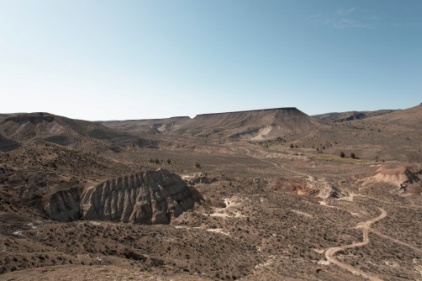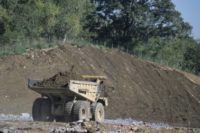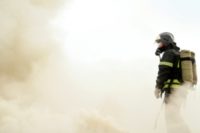NIOSH warns workers, employers about erionite

 Calling erionite "an emerging North American hazard," the National Institue for Occupational Safety and Health (NIOSH) says a growing body of evidence links the substance to serious health effects includng lung disease.
Calling erionite "an emerging North American hazard," the National Institue for Occupational Safety and Health (NIOSH) says a growing body of evidence links the substance to serious health effects includng lung disease.
Until recently, there was little recognition of the exposure risk and potential health hazards of erionite, a naturally occurring mineral found in volcanic ash that has been altered by weather and groundwater. Disturbance of the material can generate airborne fibers that can cause health effects similar to those caused by asbestos. Another similarity to asbestos: erionite deposits are present in many Western states.
Now, experts are realizing that some workers may have a greater potential for exposure than previously thought.
Writing on the NIOSH Science blog, David Weissman, M.D., and Max Kiefer, MS, CIH review cases of workers in Utah, North Dakota and Mexico who developed fibrosis and other pulmonary problems and who were found to have erionite particles in their lungs.
The North Dakota study "was motivated by the realization that, since the 1980s, gravel pits had been excavated in areas containing erionite deposits and the gravel used to surface local roads and other areas," said Weissman and Kiefer. Sampling demonstrated the potential for airborne fiber exposure, and individuals with potentially high exposures were identified and examined.
"Two with histories of road maintenance work (one had also worked in a local gravel pit) were found with mild bilateral localized pleural changes with calcification and minimal unilateral and bilateral lower lobe interstitial changes that could only be seen by CT scan. Other than erionite, neither reported potentially causative exposures."
Although there are no regulatory or consensus standards or occupational exposure limits (OEL) for airborne erionite fibers, the National Toxicology Program has designated erionite to be a known human carcinogen. Erionite-related disease has most often been reported in road construction and maintenance workers potentially exposed to erionite-containing gravel used in road surfacing. Erionite-related disease has linked to occupational activities involving crushing erionite-containing rock or stirring up dust in soils/gravel that contain erionite.
"Erionite fibers only pose a hazard if they are disturbed and become airborne, and control recommendations should focus on reducing the potential for exposure to airborne erionite fibers," say Weissman and Kiefer. Erionite fibers can become airborne when gravel containing the substance is disturbed. Exposure intensity may be affected by weather conditions (damp vs. dry, windy vs. calm), the intensity with which erionite-containing materials are disturbed and the concentration of erionite in the gravels being disturbed.
The blog authors precautions similar to those prescribed for working with asbestos should be implemented to protect workers.
Additional recommendations include:
• Workers should be trained about the potential hazards of erionite, and about how to reduce exposure
• Companies should know where erionite containing material is present
• The use of erionite containing aggregate should be avoided whenever possible
• Wet methods should be used to reduce dust generation for road work in quarries and anywhere erionite is present
• The number of workers who will work with erionite should be limited
• Decontamintion protocols should be instituted for changing clothing, showering before leaving the worksite, and appropriate cleaning/disposal of personal protective equipment (PPE)
• Work clothing should not be washed at home
• Dry sweeping, and the use of leaf blowers, and compressed air for cleaning should be prohibited.
• Employees should be protected with PPE, including respiratory protection. Note: An occupational safety and health professional should be consulted for specific guidance about the most appropriate personal protective equipment that should be used for the work being conducted.
• Eating, drinking or smoking should be prohibited in dusty work areas where erionite fibers may be airborne. Workers should move away from the work area for breaks and wash their hands and face before eating, drinking, or smoking.
Looking for a reprint of this article?
From high-res PDFs to custom plaques, order your copy today!





